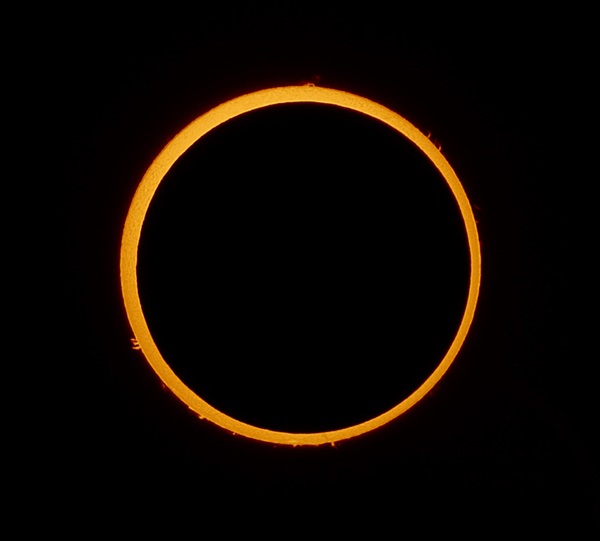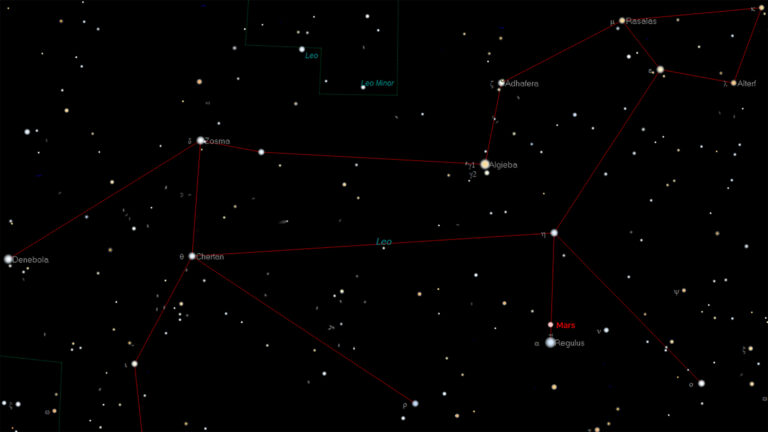Key Takeaways:
Editor’s note: Slooh Space Camera, with commentary by Astronomy magazine’s Bob Berman, will broadcast a free, real-time view of the annular solar eclipse from Australia. Viewers can capture a first look of the eclipse on Slooh.com, Thursday, May 9, starting at 5:30 p.m. EDT (21h30m UT).
An eclipse occurs when the Sun, the Moon, and Earth align (in that order, with our satellite in the middle). If they do so while the Moon is closer than average to Earth, observers will witness a total eclipse. Sometimes, though, its location in its orbit makes the Moon more distant than normal at the time of a line-up, as it is during this May’s eclipse. Its distance makes it appear smaller in the sky and prevents its shadow from covering the Sun’s whole disk. Thus, eclipse viewers will see a ring of sunlight, known as the “annulus” in the sky during this “annular eclipse.”
The annular path begins at sunrise May 10 in Western Australia and crosses the Northern Territory. Those lucky enough to be on the path of annularity when the shadow sweeps next through Queensland northwest of Cairns will enjoy more than four minutes of annularity.
In a few spots on Papua New Guinea and the Solomon Islands, observers will be able to see the annular eclipse before it passes into a landless part of the Pacific Ocean. Those near but not on the path of totality can still view a partial eclipse.
Astronomy Senior Editor Richard Talcott considers this May’s event an impressive solar eclipse and considers those in Australia to be lucky. “Some inhabitants of Queensland who experienced totality in November will also experience annularity this May,” he says. “Some of the same regions northwest of Cairns lie within both eclipse tracks.”
Eclipse viewing tips
- Don’t view this event without eye protection. Even during the annular phase, the Sun shines brightly enough to damage your retinas if you view it directly. Use only approved eclipse glasses, solar filters, or #14 welder’s glass.
- Arrive at your viewing site an hour or more before the partial phases of the eclipse begin, especially if you want to photograph the event.
- Once the Moon covers a large part of the Sun’s disk but before annularity begins, take a look at your surroundings to see the effects of the eclipse, including the tiny solar crescents created by sunlight filtering through any nearby trees.











